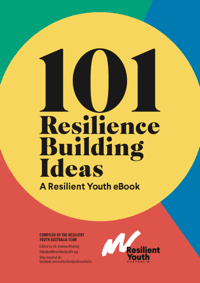20+ Fun & Engaging Ways to Form Random Pairs
So you’ve asked your group to pick a partner so that you can form smaller teams and… they immediately make a beeline to their best…

Resilience is talked about a lot these days and for good reason.
Generally speaking, resilience is often defined as the ability to withstand adversity and bounce back from difficult life events. It does not mean an absence of stress, emotional upheaval or suffering in one’s life, rather an ability to work through emotional pain and suffering when it occurs.
Regardless of how you look at it, resilience is important because it gives people the strength they need to overcome challenges and work through problems. If you lack resilience, especially as a young person, you can easily get overwhelmed and may turn to unhealthy coping mechanisms.
A lot.
A well-known 2011 meta-study by Durlak et al, reviewed 213 school-based, universal social and emotional learning programs involving over 270,000 US students from kindergarten to high school and found significantly improved social and emotional skills, improved positive attitudes about self, others and school.
On the back of improved behaviours lasting at least 12 months, many studies show a remarkable gain in academic achievement among students who exhibit strong, resilient characteristics.
As the folks at Resilient Youth say, how you nourish and promote resilience may be the most influential action you take as a school leader.
For most of us, we often do not know where to start, so they produced a wonderful free document that shares 101 ways to build resilience and well-being in young people.
Download 101 Ways To Build Resilience PDF
This document is jam-packed with dozens and dozens of low-cost or no-cost practical tips, tools and suggestions that will help you build the resilience of your students in their ordinary daily lives.
The 101 ideas were compiled by experienced educators and organised by Resilient Youth’s CPR Framework – Connected, Protected and Respected.
Here are just three really simple, effective ideas you will discover inside:
You can never have enough ways to build resilience. Download Resilient Youth’s free PDF today, you’ll be glad that you did.


Best-selling book featuring 150+ fun group games & activities. Scan QR codes to access digital content including videos.

Brand new deck of cards featuring emoji images to help you inspire conversations about emotions, feelings & experiences.
Download our free 28-page ebook jam-packed with outrageously fun activity ideas.
Just one more question:
Share this with friends and colleagues.
We offer a range of membership plans with no surprises.
Click an option below & discover our simple pricing.

Click here if you’re a:

Click here if you represent a:
Explore plans for
10, 50, 200 or more
potential users